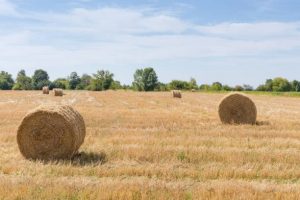When choosing the correct baling twine, there are several factors to consider, including durability, biodegradability, cost, and colours. These factors are critical to choosing the right twine for your project. After reading this article, you should be able to make an informed decision about the best twine for your needs. Please contact the manufacturer if you have any questions about the twines available. They will be happy to answer your questions.
Biodegradability
 When choosing the type of baling twine, biodegradable baler twine is the way to go. There are a few advantages of this material over other types. The biodegradable kind is UV treated to prevent oxidation. It is also available in various colours and has comparable strength to sisal twine. Farmers should not feed the binding material to livestock. Biodegradable twine is not digestible. For quality baling twine, check out at https://netwrap.com.au/baling-twine-australia now.
When choosing the type of baling twine, biodegradable baler twine is the way to go. There are a few advantages of this material over other types. The biodegradable kind is UV treated to prevent oxidation. It is also available in various colours and has comparable strength to sisal twine. Farmers should not feed the binding material to livestock. Biodegradable twine is not digestible. For quality baling twine, check out at https://netwrap.com.au/baling-twine-australia now.
Another advantage of biodegradable twine is that it does not contribute to landfill waste. Biodegradable twine is not composed of chemicals or hazardous materials that can contaminate groundwater. It is also easy to clean and does not contribute to growing weeds in landfills. Because of its environmental benefits, biodegradable twine is the best choice for farmers. However, it can be expensive compared to sisal twine.
Durability
There are many factors to consider when choosing the right type of baling twine. Baler twine is made of several components, including polypropylene, which guarantees high strength. The best baling twine is black label twine, which is biodegradable and recyclable. Its durability and strength will depend on the use for which it was designed, such as for farm-related purposes. A durable baler twine can withstand exposure to the elements for many years.
Depending on the type of baling machine, baling twine can come in different colours. The most common colour is black, but other colours are available. Baling twine is highly durable and does not break easily in direct sunlight, unlike wire fences. It can hold up to 800 pounds of weight and is resistant to corrosion. Moreover, it can be dyed in any colour you desire. For many reasons, whether it’s black, yellow, red, or some other colour, baling twine is an excellent choice.
Cost
The cost of baling twine has increased drastically over the past few years. The rise can be attributed to various factors, including the rising price of petroleum and other raw materials such as fertilizers and tires. Unfortunately, the increased demand for these materials has also affected hay availability. Fortunately, there are several options for baling twine that are cost-effective and high-quality. We’ve outlined some of them below.
AMAZING baling twines have special properties that make them ideal for various baler models. Unlike other types of baler twine, AMAZING baler twine is made from high-quality polypropylene yarn and is resistant to mould, chemicals, and decay. It also makes for strong knots and comes in natural and dyed colours. Great baler twine is available in various sizes, from small square balers to high-density round balers. For quality baling twine, check out at https://netwrap.com.au/baling-twine-australia now.
Colours
There are many advantages to using different colours of baling twine. First, it will make choosing the right twine for your baling needs easier. Many twine brands now offer colour-coded segments, making choosing the correct twine easier. Choose the colour that best suits the baling conditions and your type of tractor or baler. For example, red twine is recommended for baling straw and orange for baling hay.
Another benefit of choosing coloured baling twine is that you can easily identify it, making it easier to store, process, and transport. Colours of baler twine are also useful for crop wrapping. Polypropylene baler twine has a high resistance to most chemicals and organic solvents. This material is also resistant to salt water, making it suitable for crop wrapping. However, the cost of polypropylene twine may concern some growers.
Places to collect baling twine
Baling twine is an environmentally-friendly material, but there aren’t many options for disposing of it. However, it is recyclable. The Twine Collection and Recycling Site in Laurel, Montana, started in 2019 to provide a safe and easy way to recycle baling twine. It is maintained by volunteers of the Yellowstone Valley Audubon Society. For more information, visit their website.
To find out how to recycle your baling twine, visit their website.
If you have a baling twine disposal facility nearby, you can bring it to them loose or in bags. The baling twine is 100% recyclable, but be sure to remove any trash or chunks of hay before you bring it to a collection site. Instead, it is best to bring the twine to a private plastics recycler, which will remelt it to make new baling twine. Similarly, melted baling twine can be recycled into automotive parts. For quality baling twine, check out at https://netwrap.com.au/baling-twine-australia now.
